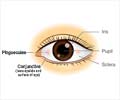- Stratosphere: UV Index - (http://www.cpc.ncep.noaa.gov/products/stratosphere/uv_index/index.html)
- UV Index Information - (http://www.cpc.ncep.noaa.gov/products/stratosphere/uv_index/uv_information.shtml)
- UV Index: Annual Time Series - (http://www.cpc.ncep.noaa.gov/products/stratosphere/uv_index/uv_annual.shtml)
Ultra-Violet Radiation-Synopsis
The Sun's energy, besides emitting visible light, as seen in the colors of the rainbow, also includes wavelengths longer or shorter than those seen in the visible spectrum. 'Ultra', in Latin, means 'beyond', hence ultraviolet (UV) is, the light seen beyond violet. It is electromagnetic in nature, with a wavelength shorter than visible light, and is invisible to the naked eye in its natural mode of existence.
UV radiations are transmitted in the form of waves and can be described in terms of their amplitude or wavelength, which is measured in nanometers. 1 nm is equal to one millionth of a millimeter. Wavelength is the measure of length of one complete wave cycle.
The UV rays that reach the earth's surface have a wavelength that range from 290 to 400 nanometers. This is shorter than that of the visible light, which has a range from 400-700 nm. The shorter the wavelength of the radiation, the greater is the potential for harm.









